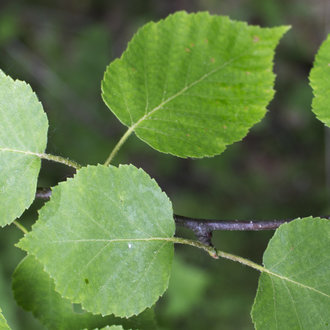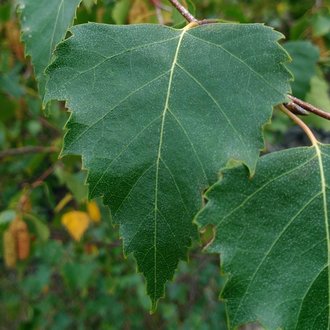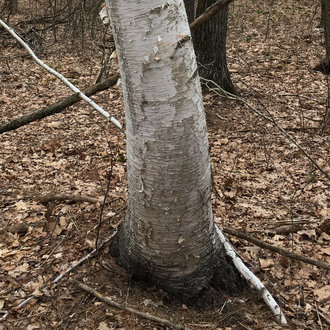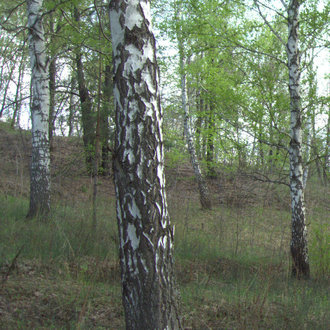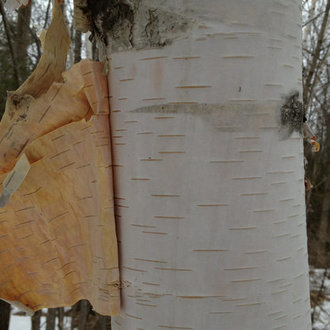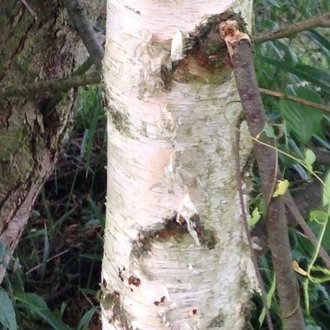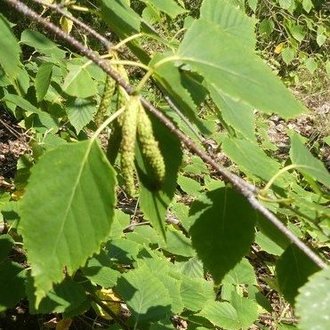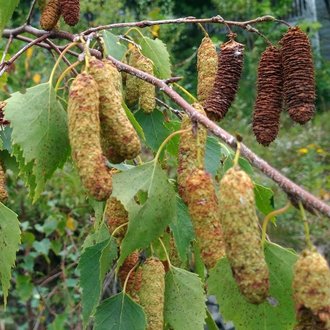Paper Birch vs European White Birch
These two closely-related species are easily confused, as both have white bark that can peel. In most cases mature trees can be easily distinguished by characteristics of bark and leaf shape. Fruiting bodies are an even more definitive way to tell these trees apart. However, due to hybridization and a high amount of variability, it may not be possible to identify all individual trees.
Paper Birch (Betula papyrifera) | European White Birch (Betula pendula) |
A native pioneer species found in a wide range of conditions in cold, northerly parts of North America. | Native to Europe and Asia, with a wide distribution. Widely planted in North America as a landscaping plant, and established in the wild at numerous isolated sites in the colder regions of the continent, mostly northerly areas and at high elevations. |
More ovoid leaves. Double serration not as pronounced, with smaller points where lateral veins meet the leaf margin. Photo © aarongunnar, CC BY 4.0. | Leaves are more triangular. Double serration is more pronounced, with prominent points where each lateral vein meets the leaf margin. Photo © Ben Armstrong, CC BY 4.0. |
Base lacks vertical cracks or furrows. Bark may be slightly darker at the base of the trunk, but usually still smooth. Photo © Mark, CC BY 4.0. | Bark of mature trees develop vertical cracks lower on the tree, turning into dark, furrowed bark at the base of the trunk. Photo © Andrey Korobkov, Public Domain. |
Bark peels more, and frequently peels in large sheets, although it may also peel in narrow strips. Photo © marie, CC BY 4.0. | Bark peels less, and when it does peel, it does so in smaller strips. Photo © mangoblatt, Public Domain. |
Much narrower carpellate aments (female catkins) and fruiting bodies. Photo © Christian Grenier, Public Domain. | Much larger and thicker carpellate aments (female catkins) and fruiting bodies. Photo © Ben Armstrong, CC BY 4.0. |
References & External Resources
These short lists show only links helpful for ID. For a complete list of references and resources also covering other aspects of ecology, visit the links section of the full article on each plant, which is the first entry here.



